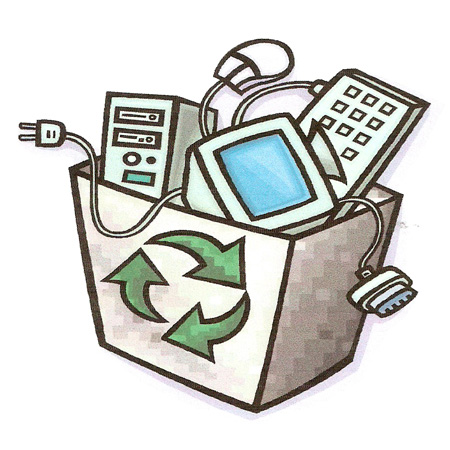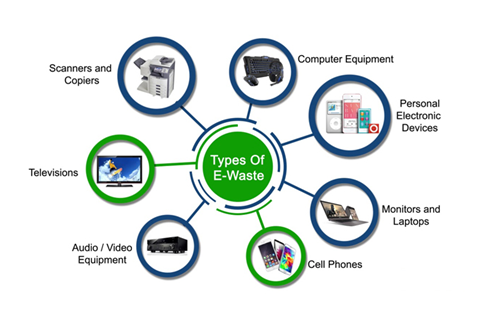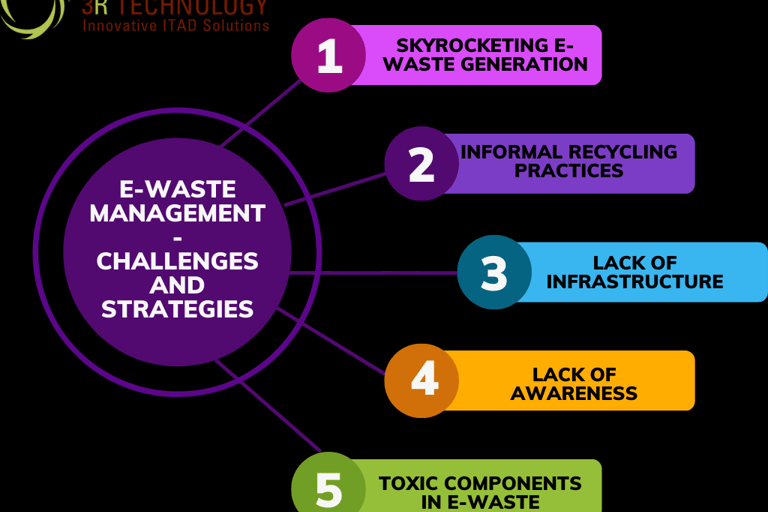Welcome to mynasir.com


E-waste, or electronic waste, has a profound impact on the environment. The improper disposal of electronic devices such as computers, smartphones, and televisions leads to serious consequences. These devices contain toxic substances like lead, mercury, and cadmium that can contaminate soil, water, and air if not handled correctly. When e-waste ends up in landfills or incinerators, harmful chemicals are released into the atmosphere, contributing to air pollution and climate change. Additionally, the extraction of raw materials for electronic devices leads to deforestation and habitat destruction. It is crucial to implement proper e-waste management practices, including recycling and responsible disposal, to mitigate its adverse effects on our environment.
Types of E-waste


There are 3 types of E-waste mainly. These are Major appliances( Fridges, washing machines, dryers), Small appliances ( vacuum cleaners, irons,), Computer and telecommunication appliances (laptops, PCs, mobile phones)
Is E-Waste a problem?
The UK is currently one of the largest producers of household e-waste in the world. When broken or unwanted electronics are dumped in landfill, toxic substances like lead and mercury can leach into soil and water.
E-waste includes non-renewable resources like gold, silver, copper, platinum, aluminum. When we dispose this without recycling its affect our environment. Pollute our environment.
How to reduce E-Waste?
It's not possible to fully remove this problem. But if we take the necessary steps it can deccrease the amount of waste.
Check products lifespan
Set a limit on electronic devices
Learn about electronic components
Recycle a useful part
Implement the policy
Manintain electronic equipments
Spread the awareness
Understand the security issues
Challenges of E-waste
It is not easy to implement all processes to reduce E-waste. We have been facing so many challenges for that these are:
Consumer expectations
Not recycling
Lack of awareness
Choose an easier disposal option
Lack of regulations
Data security concerns
E-Waste management
Always try to buy a device after checking the lifespan. Nowadays people buy trendy things . But its lifespan is not very held for a long time. so avoid buying trendy things. invest the things which is sustain for long time.
Set the limitation of buying so many electronic products at one time. Because it helps to reduce the e-waste created by using so many products and also it decrease the amount of production the electronic products.
Keep learning about electronic products. Find out the components of products. There are many specific materials that are responsible for environmental disbalance. Many consumers using electronic products do not have much knowledge about it. So its need to learn about things components and materials.
Recycling is one of the best ways to reduce e-waste. Before recycling you check your drive. Clean up your drive then recycle it. Recycle old devices after making sure all data can be stored in your new device. Because protecting your data is your responsibility.
There are laws for how to recycle, how to reduce, or how to manage the production of e-devices. Please try to follow these rules for recycling the products. Always try to follow the rules that keep our environment safe.
Keep learning about electronic products. Find out the components of products. There are many specific materials that are responsible for environmental disbalance. Many consumers using electronic products do not have much knowledge about it. So its need to learn about things components and materials.
Spreading awareness about e-waste is essential for promoting sustainable practices and reducing the environmental impact of discarded electronics. We can take some steps like educational programs, seminars, and organizing webinars in school & colleges, it will be help us to spread awarness .
Understanding the security issues associated with e-waste is vital for individuals, businesses, and organizations. E-waste, which includes discarded electronic devices and equipment, poses security risks when not properly managed. We can maintain security by taking some steps like Proper Disposal, Establishing a data system,, Employee awareness.


Electronic waste, or e-waste, refers to discarded electronic devices and equipment. Proper e-waste management is crucial due to the potential environmental and health hazards associated with the improper disposal of electronic devices. Here are some key aspects of e-waste management.
Collection & Segregation :
Established Collection points of E-waste
Segregation of the things of E-waste
Awareness & Lack of Education :
Promote Awareness of recycling, and reuse of the e-waste.
Educate the public about improper e-waste disposal.
Recycling Facilities :
Set up recycling facilities for different types of equipment.
Ensure the facilities of e-waste recycling are environmental freindly.
Data Security :
Implement measures to secure sensitive data on devices before disposal.
Provide options for data secure destruction services..
Circular Economy Approach :
Encourage the adoption of a circular economy model where materials from old electronics are reused to manufacture new products.
E-waste Audit :
Conduct regular audits to assess the volume and types of e-waste generated.
Use audit findings to improve e-waste management strategies.
E-waste management requires a comprehensive and collaborative approach involving governments, manufacturers, consumers, and the recycling industry. Sustainable practices and responsible disposal are essential for mitigating the environmental impact of electronic waste.
E-waste affect
Electronic waste, also known as end-of-life (electronics or e-waste, refers to discarded, recycled, or refurbished electrical and electronic products.
Nasir Uddin
11/1/20234 min read

